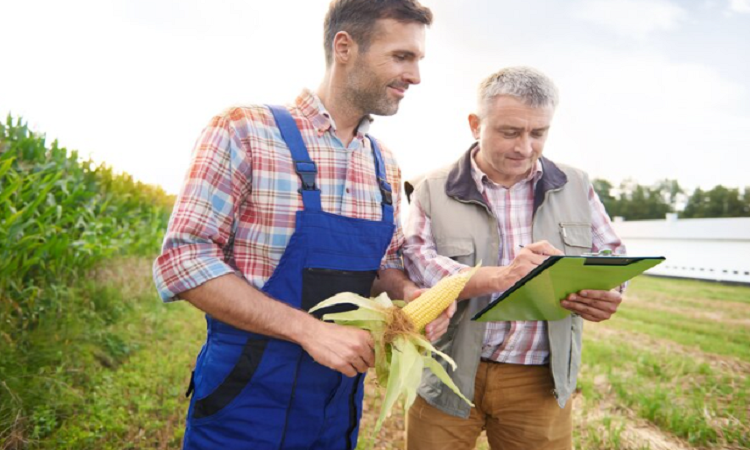The history of agriculture and rural development in the United States and how it has evolved over time
Welcome to the fascinating world of agriculture and rural development in the United States! From the early days of Native American agriculture to the modern era of sustainable farming, the history of agriculture in the United States has been a story of innovation, adaptation, and hard work. In this blog, we will explore how agriculture and rural development in the United States have evolved over time and the important role they have played in shaping the country’s economy, culture, and way of life.
For centuries, agriculture has been the backbone of the American economy, providing food, fiber, and fuel to millions of people across the country. From the fertile farmlands of the Midwest to the rolling hills of the Appalachians, American agriculture has thrived on a rich tradition of innovation and hard work. But it hasn’t always been easy. Over the years, American farmers have faced a wide range of challenges, from drought and pests to market volatility and changing consumer preferences. Despite these challenges, however, agriculture has continued to be a driving force in the American economy and a vital part of the nation’s cultural identity. Join us as we explore the fascinating history of agriculture and rural development in the United States and discover how it has shaped the country we know and love today.
Early Agriculture in the United States
Before European colonization, Native American agricultural practices varied widely across different regions of the United States. Some tribes practiced a form of slash-and-burn agriculture, in which they cleared land by burning the forest and then planted crops in the ashes. Other tribes used more sophisticated methods such as irrigation, terracing, and crop rotation to sustain their farming practices. Native Americans grew a wide variety of crops, including maize, beans, squash, and sunflowers.
When European settlers arrived in the Americas, they brought with them new crops, technologies, and farming practices that radically transformed Native American agriculture. Europeans introduced horses, plows, and other farming tools that allowed for larger-scale agriculture. They also introduced new crops such as wheat, rice, and barley, which quickly became popular in the United States. However, European colonization also brought with it disease and forced displacement of Native American communities, which devastated many tribes and led to the loss of their traditional agricultural practices.
Agricultural Revolution in the United States
The Industrial Revolution brought significant changes to agriculture in the United States, as new technologies and machines revolutionized farming practices. The introduction of steam-powered tractors, threshers, and other machinery led to significant improvements in crop yields and efficiency. Farmers were able to produce more food with fewer workers, leading to lower costs and higher profits.
The agricultural revolution also led to the growth of large-scale commercial agriculture, as farmers began to specialize in specific crops and sell their produce on a larger scale. This shift towards commercial agriculture allowed for increased specialization and led to the development of new markets for agricultural products. However, it also led to the consolidation of land and resources, as larger farms and agribusinesses grew at the expense of smaller family farms. Despite these challenges, the agricultural revolution played a significant role in the growth of the American economy and the development of the modern farming industry.
Government Policies and Agricultural Development
Government policies have played a crucial role in shaping agricultural development in the United States. From the Homestead Act of 1862, which encouraged westward expansion and settlement, to the Morrill Land Grant Act of 1862, which established agricultural colleges and provided funding for research and education, government policies have had a significant impact on the growth and evolution of agriculture in the country.
The Homestead Act provided land to settlers in the western United States, encouraging the growth of agriculture and the development of rural communities. The Morrill Land Grant Act helped to establish the agricultural education system in the United States, providing funding for research and training that has led to significant advances in farming practices and technology. Other government policies, such as farm subsidies, agricultural tariffs, and conservation programs, have also played a significant role in shaping the agricultural industry and rural development in the United States.
Modern Agriculture in the United States
Modern agriculture in the United States has seen significant advancements in technology and farming practices that have revolutionized the industry. The introduction of precision agriculture, which utilizes drones, GPS technology, and sensors, has led to more efficient and targeted use of resources such as water and fertilizer. Biotechnology and genetic engineering have also played a significant role in improving crop yields and increasing resistance to pests and diseases.
In recent years, there has also been a growing movement towards sustainable agriculture and organic farming. These practices prioritize environmental stewardship and soil health and have gained popularity among consumers who are concerned about the impacts of conventional farming practices on the environment and human health.
Despite these advancements, modern agriculture also faces significant challenges. Climate change poses a threat to crop production, with extreme weather events such as droughts and floods becoming more frequent. Labor shortages also present a challenge, as many agricultural workers are immigrants and face uncertain legal status and poor working conditions. Finding solutions to these challenges will be critical for the continued success and sustainability of modern agriculture in the United States.
Rural Development in the United States
Rural development plays a critical role in the overall development of the United States. Rural areas are home to a significant portion of the population, and provide important resources such as food, water, and natural resources. Rural development has evolved over time, with the growth of rural infrastructure and community development programs that aim to improve the quality of life for rural residents.
Despite these efforts, rural communities continue to face significant challenges, including poverty, lack of access to healthcare and other services, and inadequate infrastructure. These challenges can lead to a decline in population and economic activity, which can have negative impacts on the overall development of the country. Addressing these challenges and promoting sustainable rural development will be crucial for the continued success and prosperity of rural communities in the United States.
Conclusion
In conclusion, the history of agriculture and rural development in the United States has been marked by significant evolution and change. From the traditional Native American practices to the modern technological advancements, agriculture has remained a crucial component of the country’s economy and society. Rural development has also played a critical role in promoting the growth and prosperity of rural communities.
The importance of agriculture and rural development in the United States cannot be overstated. Agriculture provides food and other essential resources, while rural development supports economic growth and community wellbeing. It is essential to continue investing in agriculture and rural development to ensure sustainable growth and prosperity.
Looking ahead, the future of agriculture and rural development in the United States will continue to evolve. The industry will need to adapt to changing environmental and economic conditions, while also addressing issues such as climate change and labor shortages. Embracing new technologies and sustainable practices will be critical to ensuring the continued success and sustainability of agriculture and rural development in the United States. With a continued focus on innovation and collaboration, the country can build a strong and vibrant future for its rural communities and agricultural sector.
Read More You May Like:














Post Comment